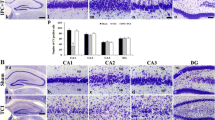Abstract
The studies reported here addressed the endothelium-protecting action of local and remote ischemic preconditioning of the brain in rats. Cerebral ischemia lasting 30 min was reproduced by thermocoagulation of the vertebral arteries with simultaneous clamping of the carotid arteries, the procedure being followed by reperfusion via the carotid arteries for 120 min (controls). The early and late phases of ischemic preconditioning and remote preconditioning were reproduced. Brain blood flow was recorded using high-frequency Doppler ultrasonography. The early and late phases of local ischemic preconditioning and the late phase of remote ischemic preconditioning were found to have endothelium-protecting actions apparent as improvements in the recovery of brain blood flow in the post-ischemic period in preconditioned rats, with lower levels of endothelial desquamation and cerebral edema. Blockade of nitric oxide synthesis eliminated the protective effects of both phases of preconditioning.
Similar content being viewed by others
REFERENCES
I. V. Viktorov, “The role of nitric oxide and other free radicals in ischemic pathology of the brain, ” Izv. Ross. Akad. Med. Nauk., 4, 5–10 (2000).
T. D. Vlasov, “The reactivity of vessels and the parameters of thrombus formation in post-ischemic reperfusion,” Ros. Fiziol. Zh. im. I. M. Sechenova, 85, No.11, 1391–1395 (1999).
T. D. Vlasov, D. A. Smirnov, and G. M. Nutfullina, “Adaptation of the small intestine of rats to ischemia,” Ros. Fiziol. Zh. im. I. M. Sechenova, 87, No.1, 118–124 (2001).
A. V. Gurin, A. I. Molosh, and G. I. Sidorenko, “Interrupted ischemia — a unique adaptive phenomenon. Perspective of new pathways of pharmacological action,” Kardiologiya, 6, 45–52 (1997).
V. A. Kozlov, N. K. Artyushenko, O. V. Shalak, A. V. Vasil’ev, M. B. Girina, I. I. Girin, E. A. Morozova, and A. A. Monastyrenko, Doppler Ultrasonography in Assessing the Hemodynamics of Tissues in the Neck, Face, and Oral Cavity in Normal Conditions and Various Pathological States. A Handbook-Atlas [in Russian], St. Petersburg (2000).
N. N. Petrishchev, E. V. Shlyakhto, T. D. Vlasov, and M. M. Galagudza, “The phenomenon of ischemic adaptation of the myocardium — pathophysiological mechanisms and possible perspectives of practical application, ” Ros. Fiziol. Zh. im. I. M. Sechenova, 87, No.5, 688–705 (2001).
N. N. Petrishchev and T. D. Vlasov, “The functional state of the endothelium in ischemia/reperfusion (literature review),” Ros. Fiziol. Zh. im. I. M. Sechenova, 86, No.2, 148–163 (2000).
N. N. Petrishchev, O. A. Berkovich, T. D. Vlasov, E. V. Volkova, E. B. Zueva, and E. V. Mozgovaya, “The diagnostic value of measurements of desquamated endothelial cells in blood,” Klin. Lab. Diagnostika, 1, 50–52 (2001).
V. B. Semenyutin, Yu. N. Zubkov, and I. P. Lomova, “Circulation, oxidative metabolism, and intravascular kinin formation in the brain in ischemia and reperfusion,” in: Proceedings of the IV International ‘Brain Ischemia’ Symposium [in Russian], St. Petersburg (1997), pp. 153–158.
J. Castillo, R. Rama, and A. Davalos, “Nitric oxide-related brain damage in acute ischemic stroke, ” Stroke, 31, No.4, 852–857 (2000).
M. Cerisoli, F. Ruggeri, G. F. Amelio, G. Giuliani, B. Bernardi, and M. Giulioni, “Experimental cerebral ‘no-reflow phenomenon’,” J. Neurosurg. Sci., 25, No.1, 7–12 (1981).
L. W. Dobrucki, L. Kalinowski, W. Uracz, and T. Malinksi, “The protective role of nitric oxide in the brain ischemia,” J. Physiol. Pharmacol., 51, No.4, Part 1, 695–703 (2000).
P. Golino, M. Ragni, P. Cirillo, V. E. Avvedimento, A. Feliciello, N. Esposito, A. Scognamiglio, B. Iaccarino, M. Condorelli, M. Chiariello, and G. Ambrosio, “Effects of tissue factor induced by oxygen free radicals on coronary flow during reperfusion,” Nat. Med., 2, No.1, 35–40 (1996).
T. Hayashi, Y. Itoyama, and K. Abe, “Vascular endothelial growth factor: protection against brain damage with MCA occlusion in rats,” in: Ischemic Blood Flow in the Brain, Y. Fukuuchi et al. (eds.), Springer, Tokyo (2001), pp. 120–127.
S. N. Jerome, C. W. Smith, and R. J. Korthuis, “CD18-dependent adherence reactions play an important role in the development of the no-reflow phenomenon,” Amer. J. Physiol., 264, No.2, Part 2, 479–483 (1993).
J. S. Jin, R. C. Webb, and L. G. D’Alecy, “Inhibition of vascular nitric oxide-cGMP pathway by plasma from ischemic hindlimb of rats,” Ame r. J. Physiol., 269, No.1, Part 2, 254–261 (1995).
R. A. Kloner, R. Bolli, E. Marban, L. Reinlib, and E. Braunwald, “Medical and cellular implications of stunning, hibernation, and preconditioning: an NHLBI workshop [special report],” Circulation, 97, No.18, 1848–1867 (1998).
N. N. Petrishchev, T. D. Vlasov, V. G. Sipovsky, D. I. Kurapeev, and M. M. Galagudza, “Does nitric oxide generation contribute to the mechanism of remote ischemic preconditioning?” Pathophysiol., 7, No.4, 271–274 (2001).
A. Rubino and D. M. Yellon, “Ischaemic preconditioning of the vasculature: an overlooked phenomenon for protecting the heart?” Trends Pharmacol. Sci., 21, No.6, 225–230 (2000).
A. Sola, J. D. Rosello-Catafau, V. Alfaro, J. Pesquero, L. Palacios, E. Gelpi, and G. Hotter, “ Modification of glyceraldehyde-3-phosphate dehydrogenase in response to nitric oxide in intestinal preconditioning, ” Transplantation, 67, No.11, 1446–1452 (1999).
B. J. Ward and A. McCarthy, “Endothelial cell ‘swelling’ in ischaemia and reperfusion, ” J. Mol. Cell. Cardiol., 27, No.6, 1239–1300 (1995).
E. O. Weselcouch, A. J. Baird, P. Sleph, and G. J. Grover, “Inhibition of nitric oxide synthesis does not affect ischemic preconditioning in isolated perfused rat hearts,” Amer. J. Physiol., 268, No.1, Part 2, H242–H249 (1995).
Author information
Authors and Affiliations
Additional information
Translated from Rossiiskii Fiziologicheskii Zhurnal imeni I. M. Sechenova, Vol. 90, No. 1, pp. 40–48, January, 2004
Rights and permissions
About this article
Cite this article
Vlasov, T.D., Korzhevskii, D.E. & Polyakova, E.A. Ischemic Preconditioning of the Rat Brain as a Method of Endothelial Protection from Ischemic/Repercussion Injury. Neurosci Behav Physiol 35, 567–572 (2005). https://doi.org/10.1007/s11055-005-0095-0
Received:
Revised:
Issue Date:
DOI: https://doi.org/10.1007/s11055-005-0095-0



